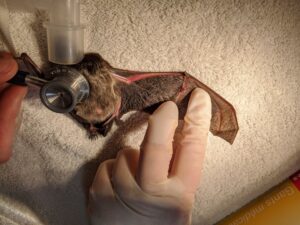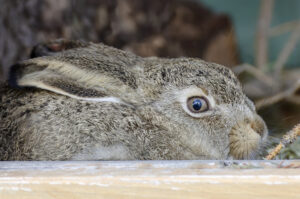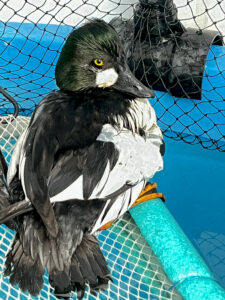By Sydney Nelson, AIWC Volunteer
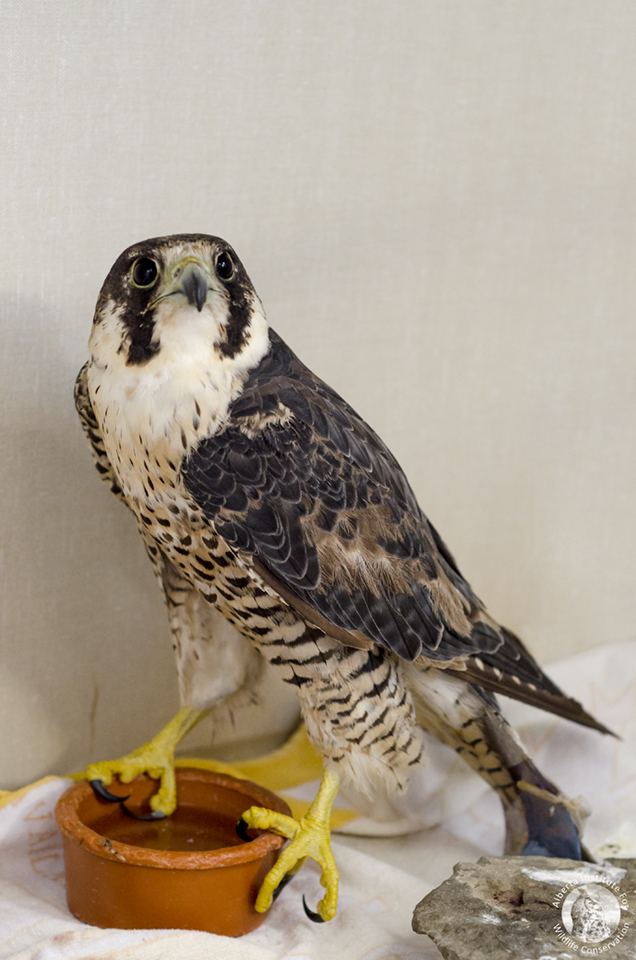
Peregrine Falcons are some of the fiercest hunters in Canada and among the most well-known and admired birds of prey. They have several essential adaptations that allow them the speed and force necessary to attack a variety of prey animals, from small rodents to songbirds and waterfowl.
Adapted for Speed
Inside their nostrils, they have a tubercule that slows down air to protect their lungs while diving, or “stooping.” To protect their eyes, falcons have a third eyelid called a nictitating membrane. They also produce a thick fluid to protect their eyes during flight. Compared to our water-like tears, Peregrine Falcons produce tears that are almost as thick as glycerine. They also have a relatively large keel and two extra vertebrae on their tails, allowing more area for powerful flight muscles.
How They Hunt
Peregrine Falcons become the fastest animals on earth when they hunt, reaching diving velocities of over 300 km per hour. These dives, or stoops, allow them to gracefully rip through the sky and capture or debilitate their prey. When their target is a songbird or small rodent, they capture the animal and devour it, but they also hunt larger birds like ducks, gulls, and even geese. To attack larger prey animals, Peregrine Falcons torpedo toward their targets with their legs tucked close to their bodies. At the last moment, they bring forward their talons. This motion acts like a braking system. The falcon will then curl one of its feet into a fist and punch the target out of the air. Once the prey has fallen to the ground, the falcon can complete the kill and feed, using its exceptionally sharp beaks and talons. Peregrine Falcons have also used this punching or scratching method while the larger target is not in flight. For example, if a duck is sitting on the grass or near a body of water, a Peregrine Falcon might stoop from the air and hit the duck on the ground, disorienting or stunning the duck, before ultimately killing and eating it.
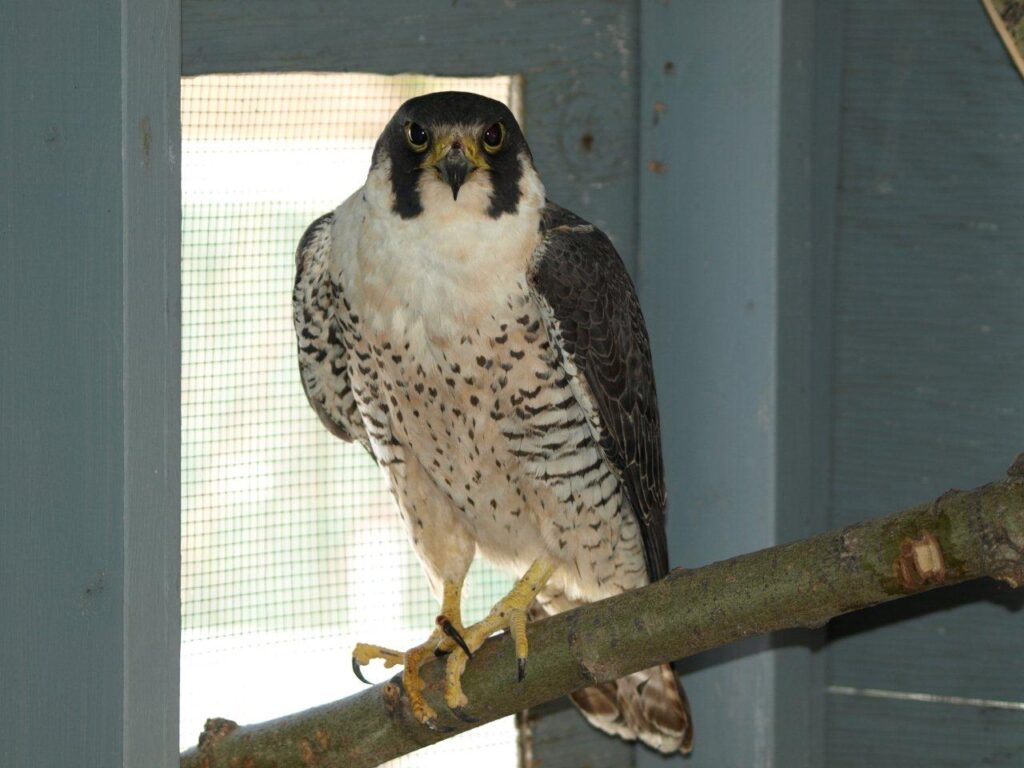
Risky Business
Though they have several adaptations and advantages while hunting, Peregrine Falcons only succeed in their hunts about 20% of the time. Peregrine Falcons today often make their homes in cities, where pigeons are a vital food source. Unfortunately, stooping in cities brings with it the risk of window strikes. They may also nest on or near bridges, where young falcons risk fledging into the water and drowning. Young Peregrine Falcons must quickly learn speed and accuracy, wherever they live, to be successful. Even outside of cities, being a Peregrine Falcon comes with risks. Though they are specialized predators, they may also fall victim to other birds of prey like Gyrfalcons, eagles, owls, and other Peregrines.
A Resilient Species
In the mid-1990s, Peregrine Falcons nearly faced extinction due to a pesticide called DDT. These crow-sized raptors fed on songbirds that had eaten DDT-impacted insects, causing their eggshells to become too thin and fragile to support their embryos. Scientists have been working hard to rehabilitate this species. Fortunately, their numbers today are stable and even climbing in many Canadian regions. At AIWC, 9% of the animals we helped to rescue and rehabilitate in 2021 were raptors. We are able to do this work because of the support we receive from our donors and volunteers. If you’d like to support our mission, please consider visiting our Support Us page, or checking out our online shop!
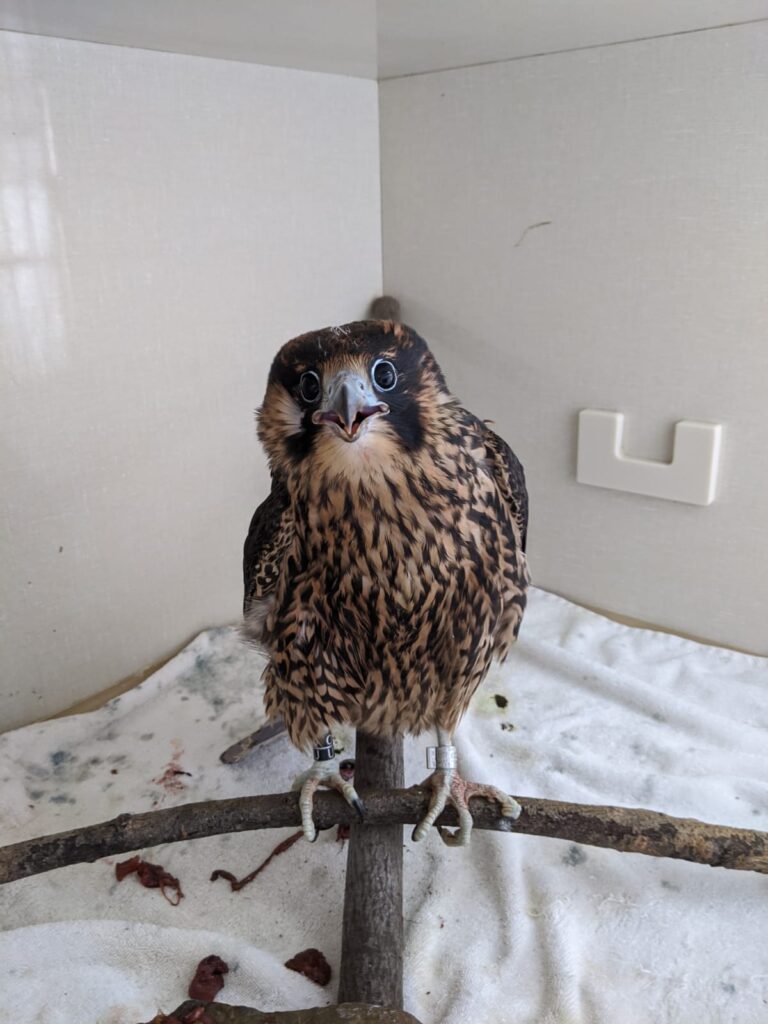
References
- McMillan, M. Falcon Attack: How Peregrine Falcons Maneuver At Nearly 225 MPH [Article], Forbes [Accessed August 5, 2022] https://www.forbes.com/sites/fionamcmillan/2018/04/13/falcon-attack-how-peregrine-falcons-maneuver-at-nearly-225-mph/?sh=640885111dd5
- Peregrine Falcon Recovery Taking Flight in Alberta [Blog post], Alberta Environment and Parks [Accessed August 5, 2022] https://albertaep.wordpress.com/2020/10/02/peregrine-falcon-recovery-taking-flight-in-alberta/
- Peregrine Falcon [species profile], Audubon.org [Accessed August 5, 2022] https://www.audubon.org/field-guide/bird/peregrine-falcon
- Peregrine Falcon [species profile], Hinterland Who’s Who [Accessed August 5, 2022] https://www.hww.ca/en/wildlife/birds/peregrine-falcon.html
- Hay, A. Adaptations For the Speedy Life Style of Peregrine Falcons [blog post] Centre of the West [Accessed August 14, 2022] https://centerofthewest.org/2020/01/28/adaptations-for-speedy-life-style-of-peregrine-falcons/#:~:text=Both%20Peregrines%20and%20Gyrfalcons%20can,scraping%20them%20with%20open%20talons

